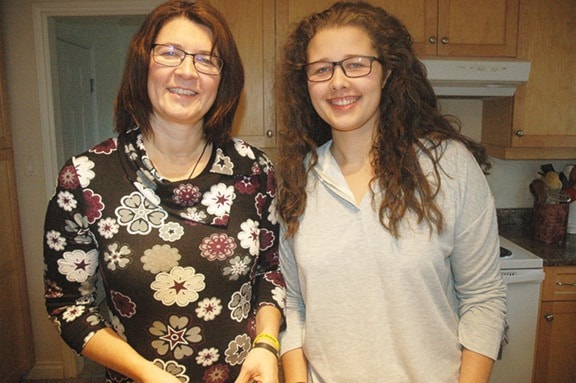Natalie Williams waits every day for a phone call that she hopes will save her young life.
Williams, 19, was diagnosed with the life-threatening liver disease biliary atresia as a child and is now on a transplant list for a new liver that is expected to take many months to become available.
But, like many organs that come from donors, livers available for transplants are scarce, so Williams’s task of finding a matching liver in a timely manner is daunting.
With statistics indicating that one in three people who need to have a liver transplant die waiting, Williams wants people to know how important it is for them to volunteer to donate their organs when they die, and make sure their wishes are known among their family members.
Williams said surveys conclude that 90 per cent of Canadians have indicated they would be willing to donate their organs.
But only 18 per cent of Canadians have actually placed themselves on an organ registry for transplants, one of the lowest rates in the industrialized world.
“I keep hoping that I’ll get that call because I won’t survive without it,” she said from her family home in Duncan. “It’s hard for me because I’ve been sick for so long. But it’s a fact that something has to happen to someone else for me to live. My life is now on hold and I’m in pain a lot of the time. I had to drop out of first-year medical courses last spring to deal with this.”
Biliary atresia results from a blockage of the bile duct, which is the pipe that drains bile, a fluid that helps with digestion, from the liver into the intestine.
Biliary atresia is the most common cause for death among infants and children with liver disease, and the leading indication for liver transplants in these age groups, accounting for more than 60 per cent of all pediatric liver transplants in Canada.
At just 10 weeks old, Williams underwent a major operation to try and deal with the disease and it saved her life at the time, but she has been in and out of hospitals and doctor’s offices ever since dealing with complications of the disease and now requires a liver transplant.
She said if she undergoes a successful liver transplant, she should be able to live a full and fairly healthy life, but waiting for an operation that may or may not come in time to save her life is difficult.
Williams said that having people register for any kind of organ transplant is hard enough, but the stigma around liver diseases makes it even harder.
She said there is an incorrect perception that liver disease typically occurs due to lifestyle choices, including drinking alcohol to excess, so many are hesitant to agree to have their livers transplanted.
But after seeing so many babies and adults lose their lives to biliary atresia, and realizing how few people, including many medical professionals, know about the disease, Williams and her family decided to take the bull by the horns when she was 14 years old.
They began the Biliary Atresia Awareness and Research group, a non-profit organization that raises awareness of both the disease and organ donation in 2012.
The organization’s website can be found at www.biliaryatresia.ca. Link to justgiving page for Natalie https://www.justgiving.com/crowdfunding/victoria-caple?utm_source=Facebook&utm_medium=Yimbyprojectpage&utm_content=victoria-caple&utm_campaign=projectpage-share-owner&utm_term=aYKKJG7zB
“Since 2012, we have raised over $10,000 and made thousands of people aware,” Natalie said.
“We’re doing our best to make a difference for people with biliary atresia and anyone who needs an organ transplant.”
